- Excellent hybrid drivetrain
- Mature ride and fun handling
- Actual character
- There's no escaping the price
- Should have more equipment
- Only one USB port!? It's 2021
You may have noticed recently that new car prices in Australia have been creeping gradually higher and higher. Albeit because of our currency, COVID, higher safety expectations from government bodies, even entry level cars are now much more expensive than in the past – there are now just a smattering of sub-$20,000 offerings available in 2021. Yet none of us were prepared for the high pricing of the 2021 Toyota Yaris ZR Hybrid. Here was a car formerly available from under $16,000 drive away, and now it comfortably doubles that, so does it justify its high asking price? Read on to find out.
Price & Equipment: 6/10
The new generation Yaris increased significantly in price upon its release in 2019 – the top-spec ZR instantly went from around $25,000 drive away to around $35,000 and the hybrid we have here is even more expensive at $32,100 plus on-road costs (around $37,000 drive away with the metallic paint and black roof option of our test car). Expensive cars can still be good value, so is the Yaris ZR Hybrid stuffed with equipment? Well, yes and no.
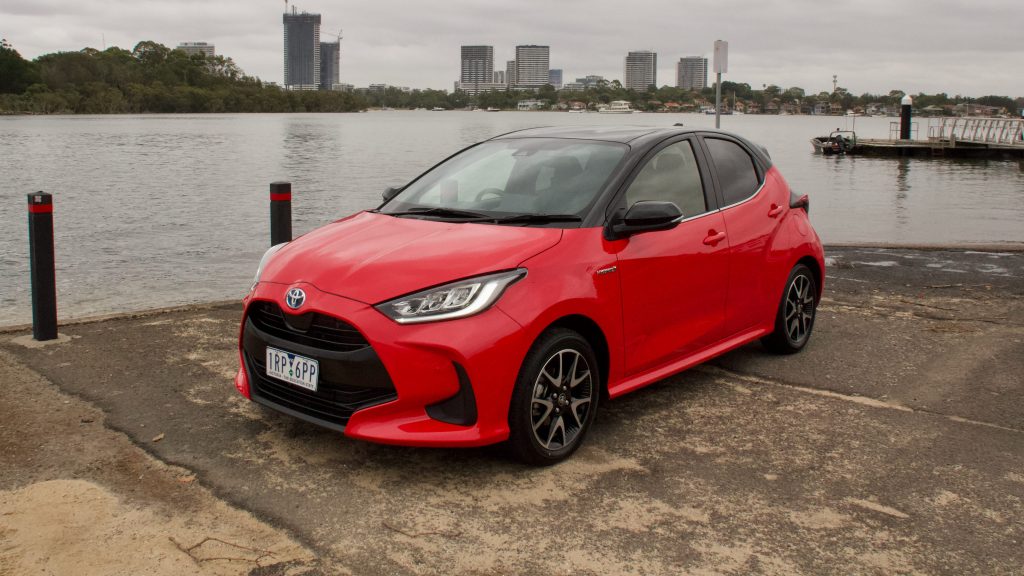
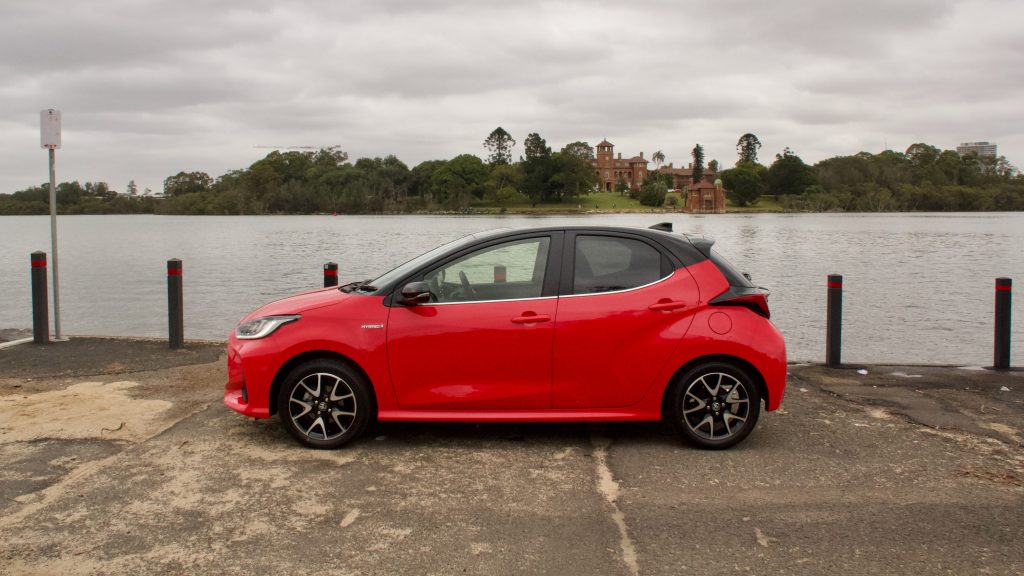
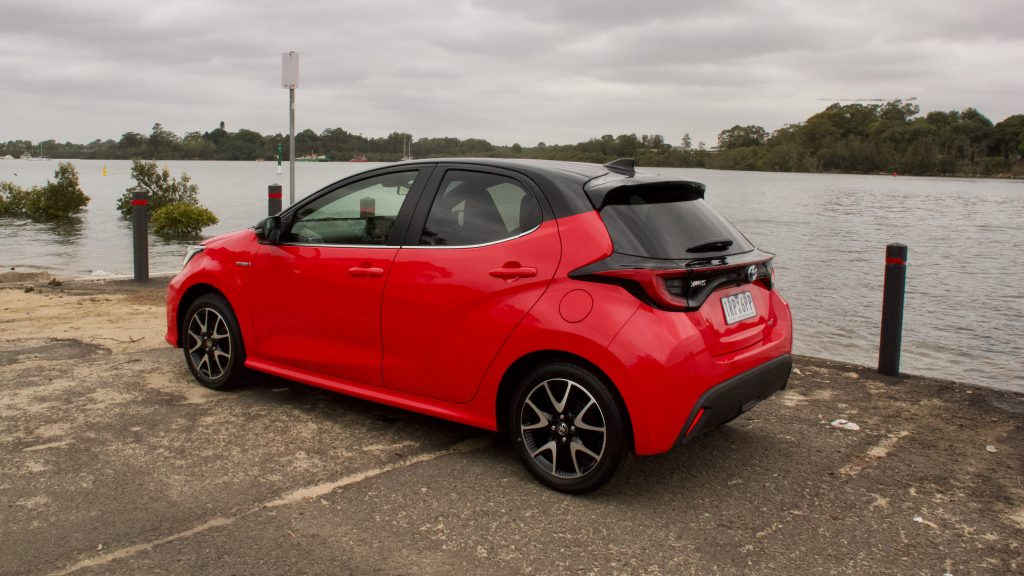
The whole Yaris range is well equipped, and the ZR in particular has 16-inch alloy wheels, climate control, all-LED lighting (including the indicators and rear fog light), sports front seats, a leather steering wheel and gearknob, a 7.0-inch touchscreen with navigation, digital radio, Apple CarPlay and Android Auto, a 10-inch heads-up display, keyless entry and start, heated and auto-folding mirrors, automatic up/down windows, rear privacy glass, a rear spoiler and if you buy the petrol variant, paddle shifters.
Safety kit is particularly strong as well with eight airbags – including segment-first centre airbags that have earned the car a five-star ANCAP safety rating – as well as auto emergency braking with pedestrian, cyclist and intersection assist, lane departure warning with lane trace assist, adaptive cruise control, speed sign assist, auto high beam, blind-spot monitoring with rear cross-traffic alert, front and rear parking sensors with reversing AEB and a reversing camera.
While it is well equipped, the top-spec Yaris – especially for almost $40,000 drive away – should have more. Even in the entry-level UK-spec Yaris you get features such as auto wipers, an electric parking brake and a centre arm rest. Top spec cars? There’s a JBL sound system, a larger 8.0-inch centre screen, heated front seats, dual-zone climate control, front fog lights, 17-inch wheels and so on and none of those features are available on Australian-spec Yaris models. Why? We’re not sure.
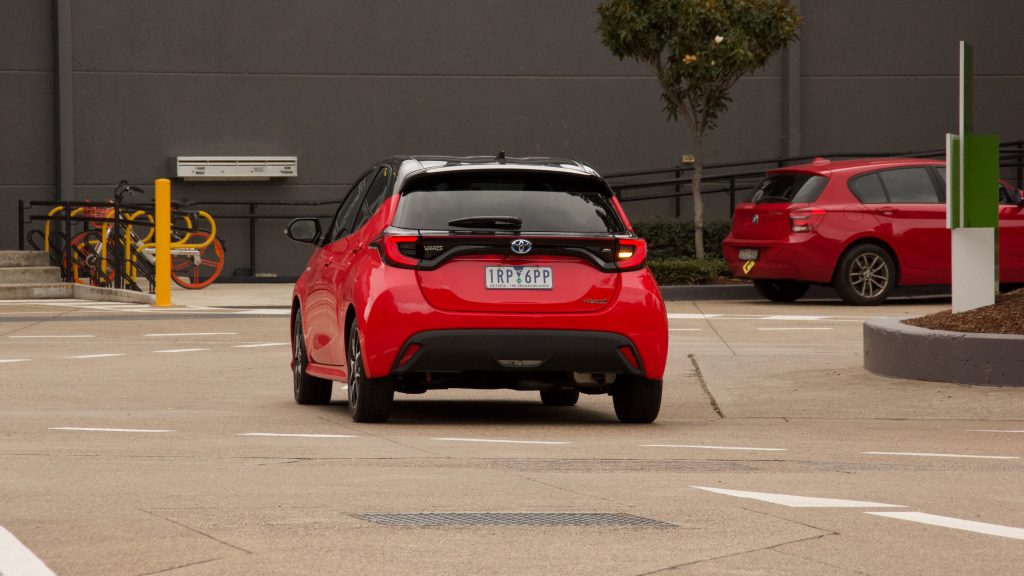
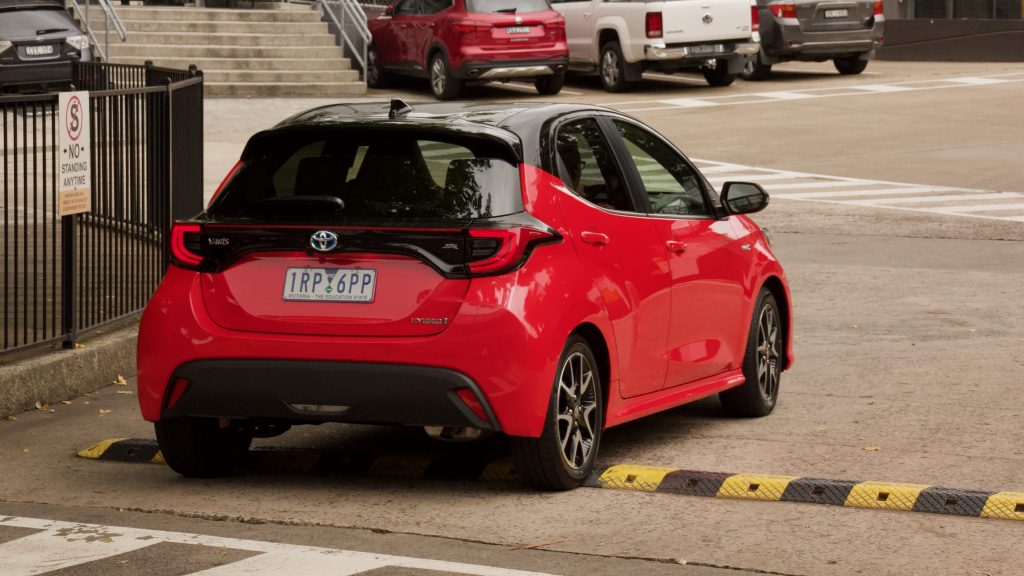
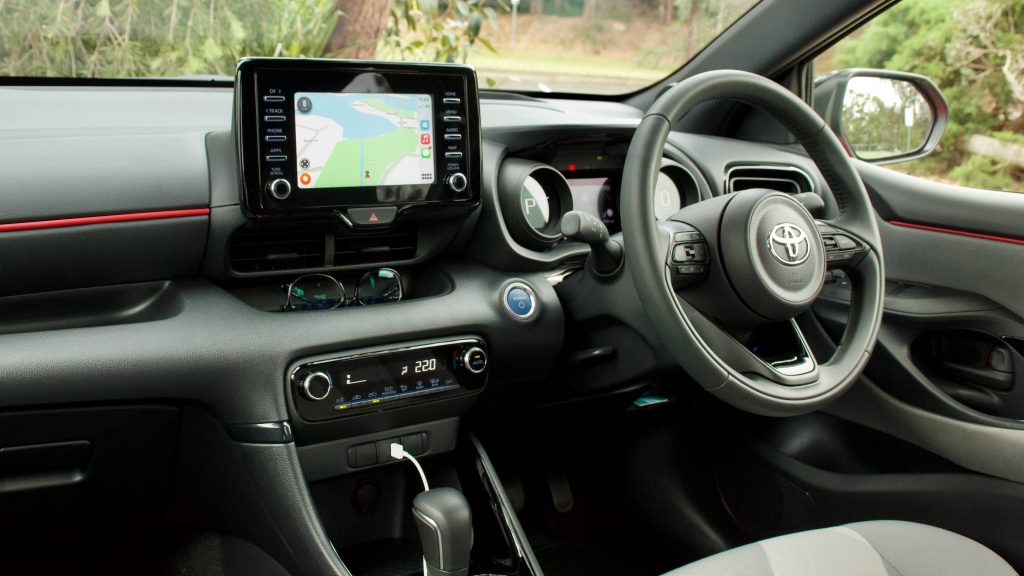
Traditional competitors to the Yaris ZR include the Volkswagen Polo Style and the Mazda2 GT. Aside from LED lighting, a heads-up display and the centre airbags, the Polo is better equipped than the Yaris as you get a larger 8.0-inch screen, a 300W beats audio system, a digital driver’s display and so on as standard. The Mazda2 GT matches the Yaris’ single-zone climate control and 7.0-inch screen, though offers features such as leather upholstery and a 360-degree parking camera. The kicker is that these extra features are standard and the Polo and Mazda2 are around $7-10,000 cheaper than the Yaris.
So why is the 2021 Toyota Yaris so expensive? It’s all to do with safety rules in Australia. Those new centre airbags are a new requirement for a five-star ANCAP safety rating (which the car has achieved), which is needed for the Yaris to qualify for fleet orders, as well as more obscure customers such as rideshare companies. With such safety regulations in force, expect to see more cars priced as high in the future – we certainly see the irony in people not being able to afford this tech and switching to an arguably less safe used car though.
Performance & Economy: 9/10
Both the petrol and hybrid variants of the 2021 Toyota Yaris ZR range use a new 1.5-litre three-cylinder petrol engine – we tested the hybrid, which is unique in the segment and is Australia’s most efficient petrol-powered car with a combined cycle rating of just 3.3L/100km. Its 85kW power rating is not bad for the segment and more than enough for its low 1,130kg kerb weight. While Toyota doesn’t quote a 0-100km/h sprint time, we’d say it’s in the nine second range, which is plenty enough for most buyers.
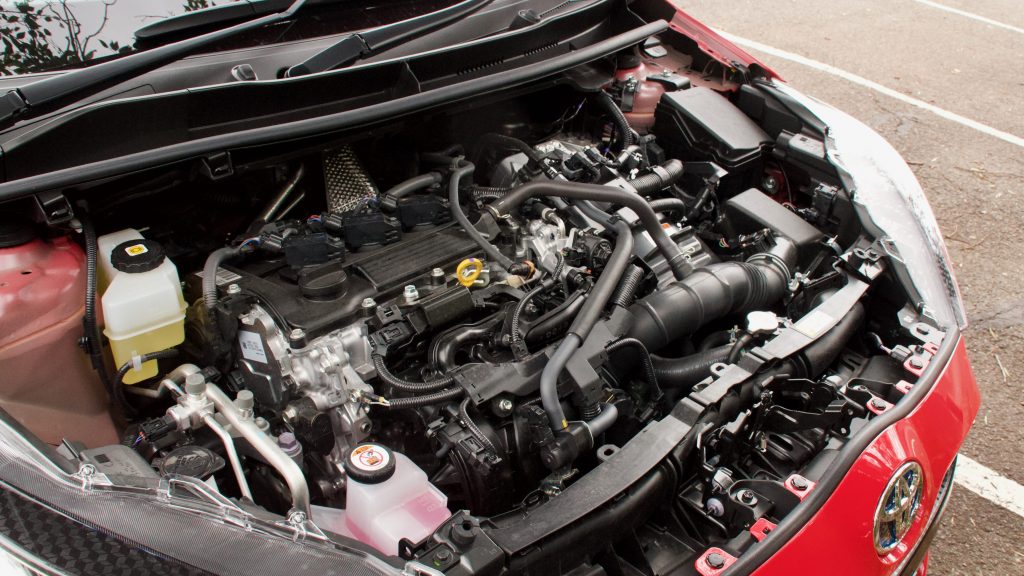
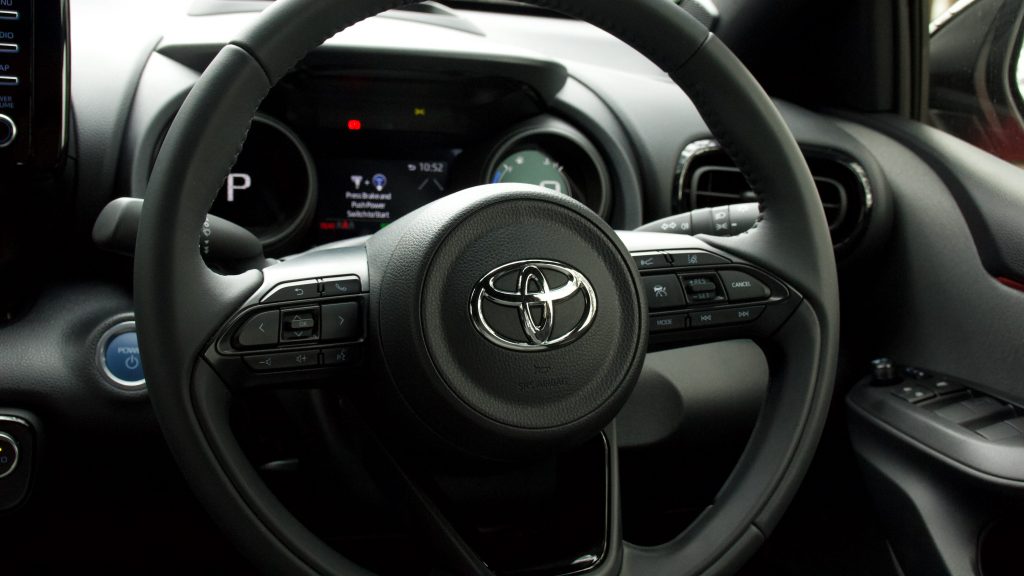
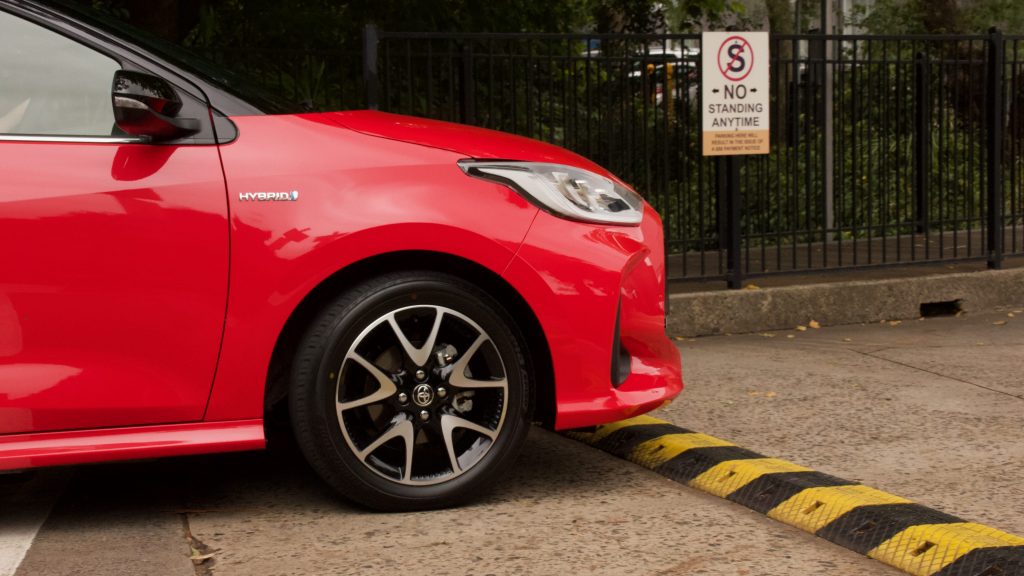
Being a hybrid, the Yaris drives differently to its petrol-powered sibling and indeed the rest of the segment. Using a small 0.8kWh battery to power a 59kW/141Nm electric motor, the Yaris hybrid uses battery power to fill in the gaps of the 62kW/120Nm petrol engine – be it in performance or efficiency.
Like other Toyota hybrids, the engine (once warm) switches off pretty much whenever you’re not using it – coasting, braking, sitting at traffic lights and so on, the car uses its battery – if there’s enough charge in the battery, that is. It can be driven up to a kilometre or so from a start on pure electric power before the petrol engine kicks in. The transition from electric to petrol power is obvious through the accelerator pedal, and it gives you a fun game to try and stay on EV power as long as possible – therefore increasing your efficiency, reducing emissions and so on. Very clever, Toyota.
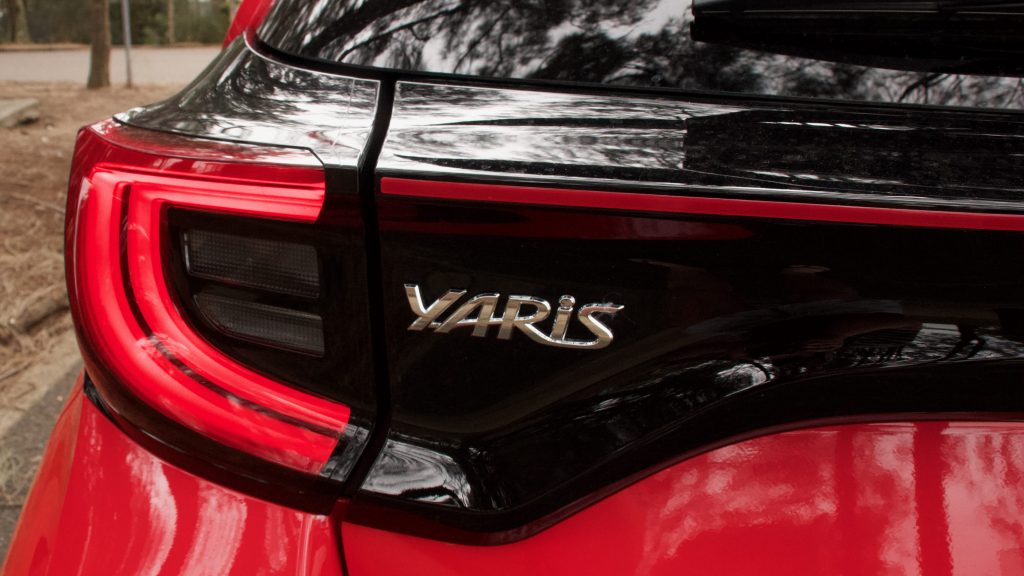
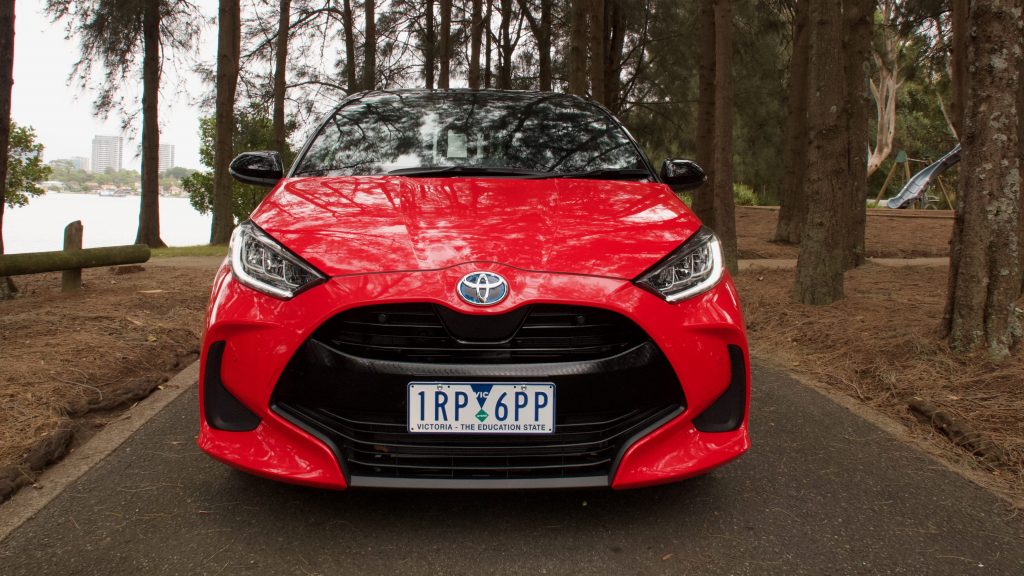
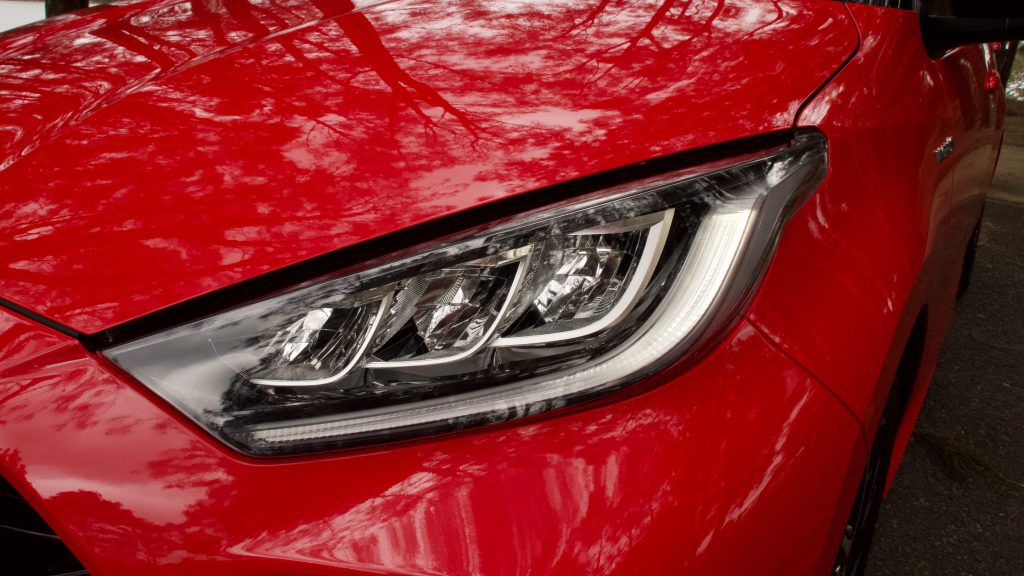
But even driving the Yaris hybrid in a normal way will give you great economy results – in our mostly urban testing, we never saw consumption above 4.0L/100km. Combine that with a relatively small 36-litre fuel tank and you’ll see a range of minimum 800km around town.
Aside from its efficiency, the Yaris hybrid’s engine is excellent. It’s a new three-cylinder unit that sounds cool, and provides reasonable refinement as well. All Yaris hybrid models are paired to a new CVT automatic gearbox and while it doesn’t feature a physical first gear like petrol Yaris models, it does have stepped ratios to feel more like a traditional auto.
Ride & Handling: 8/10
While the previous generation Yaris was based on the early 00’s Yaris that came before it, the new model is based on Toyota’s new TNGA platform and like the Corolla, Camry, RAV4 and every other Toyota that uses it, the Yaris has experienced a dynamic makeover. Gone is the tinny, crashy feel of the old model and a much more mature experience has replaced it.
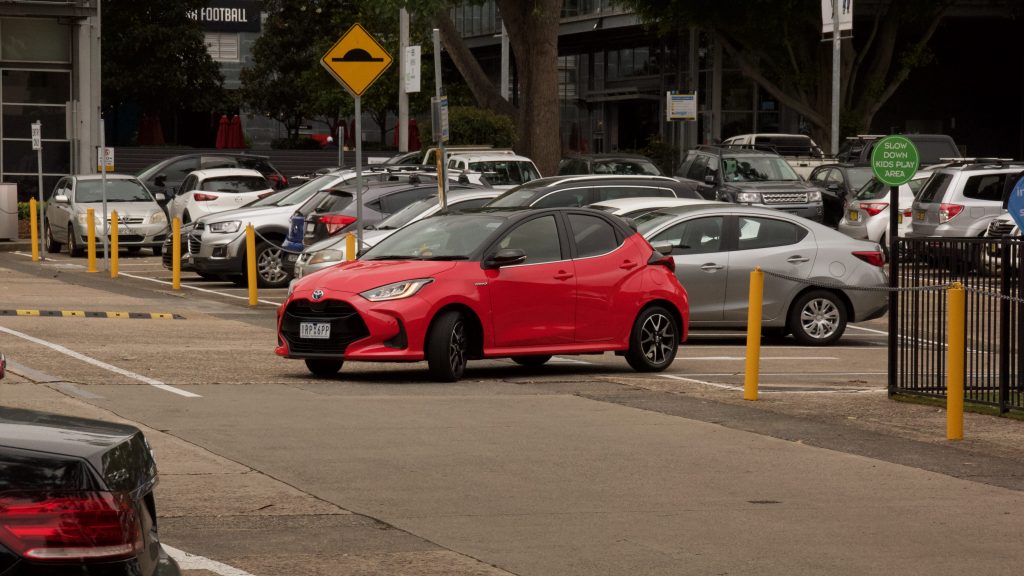
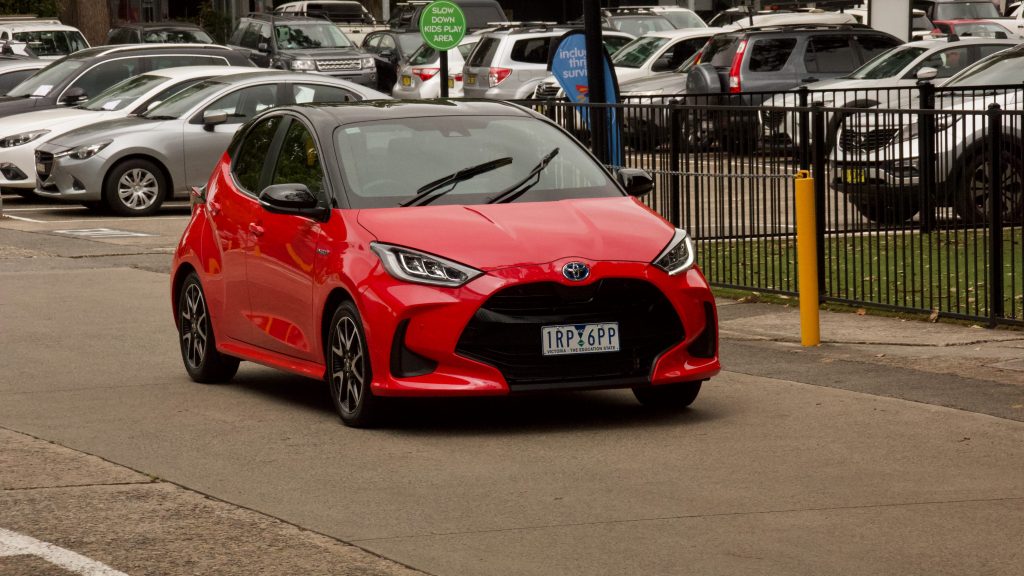

The steering is more linear and feelsome this time around, while the ride quality is exceptional – even on Sydney’s awful roads. It’s also a lot more fun to drive – the keen steering as well as playful chassis mean that you can have genuine fun behind the wheel. When was the last time you could say that about a Yaris in Australia?
There are a few issues however – the lack of road noise insulation can be annoying on highways, the visibility isn’t amazing and the whole range has drum rear brakes. Seriously, Toyota?
Interior & Practicality: 7/10
The interior of the previous generation Yaris was arguably its worst point. Clearly a GFC-special – a car developed for as little as possible in the Global Financial Crisis of the late 00’s – with cheap materials and a basic design, the last Yaris’ cabin was outshone by almost every competitor. This was a real shame, because the Yaris before it (and the Echo before that – which was called Yaris overseas) had an amazingly clever and practical interior. Thankfully, the Yaris name returns to the latter with the new model.
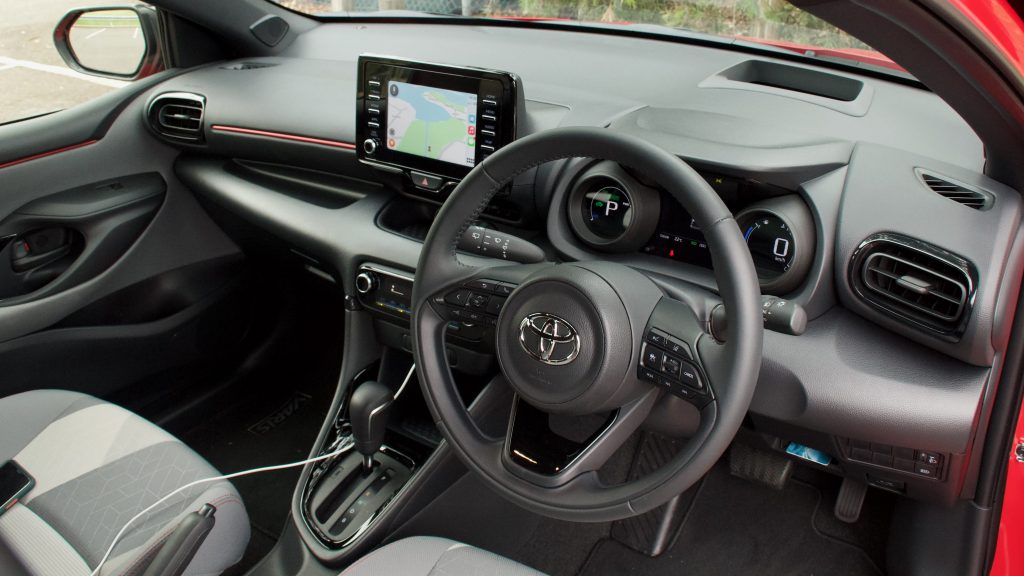
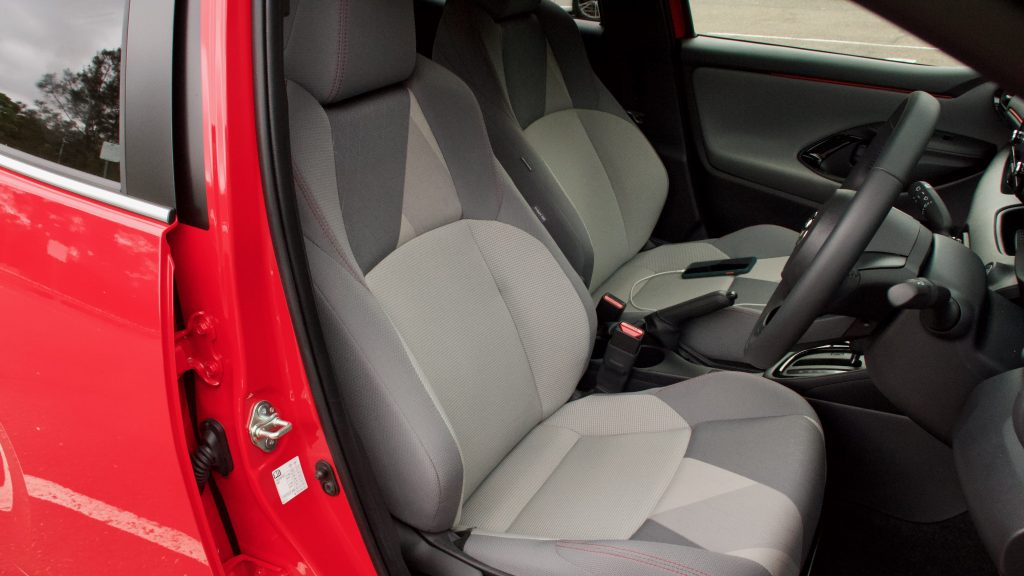
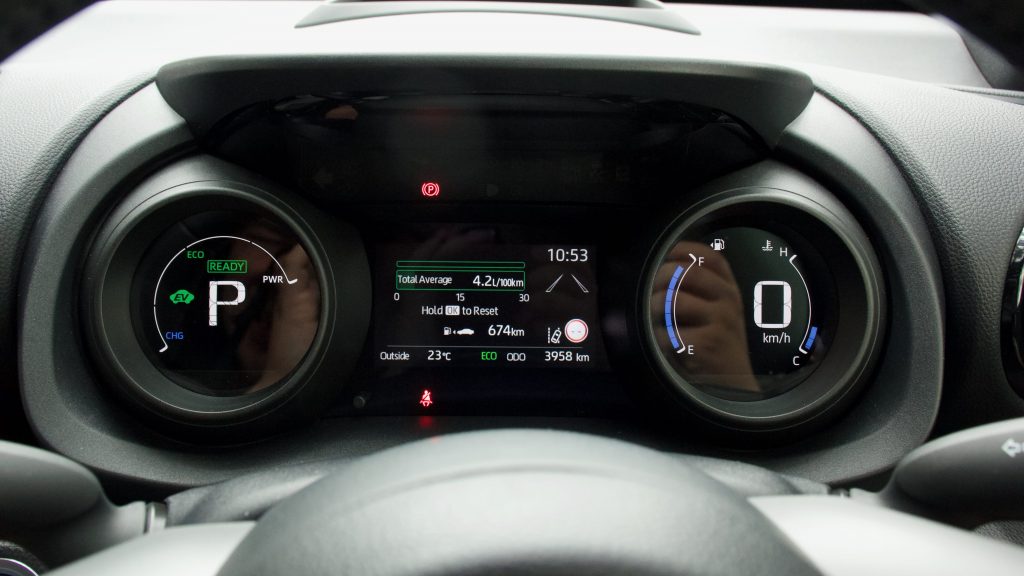
Firstly, there’s the quality – the formerly cheap interior of the old model has been turfed completely with a higher quality and charismatic cabin that feels much more European this time around. There are soft touch materials atop the dashboard, and interesting cloth trim on the door panels, the leather steering wheel is lovely to hold and even the driver’s display is far more interesting and attractive than before as well.
Centre of the Yaris’ cabin is a 7.0-inch touchscreen with inbuilt navigation with live traffic, Apple CarPlay, Android Auto, a reversing camera and digital radio. It’s the same system as in other Toyota products and it’s very easy to use, though the screen quality isn’t the best. Sound quality is reasonable though, thanks to a six-speaker sound system, but we’re not sure why Australia doesn’t get the larger 8.0-inch screen and JBL sound system offered on European models.
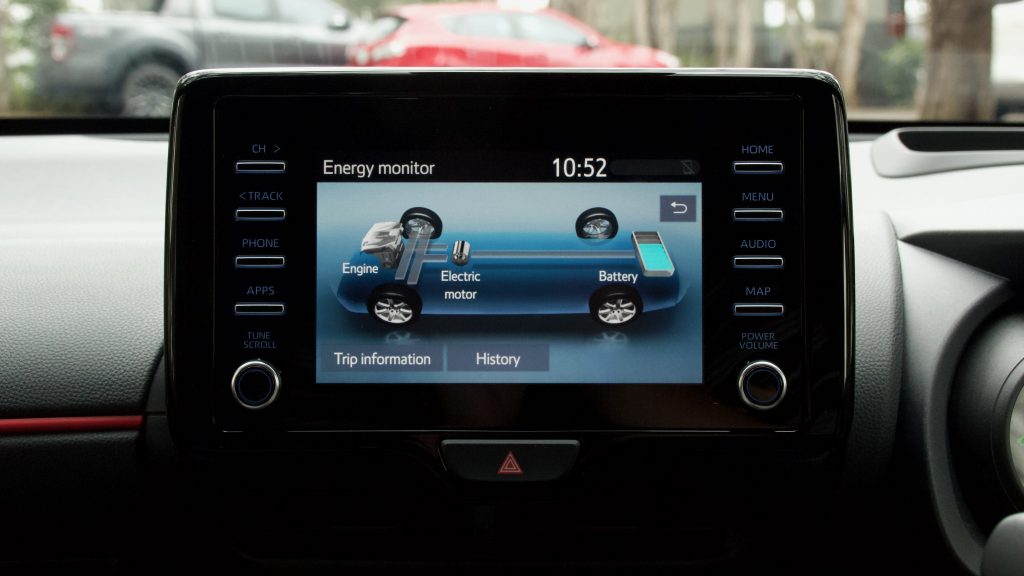
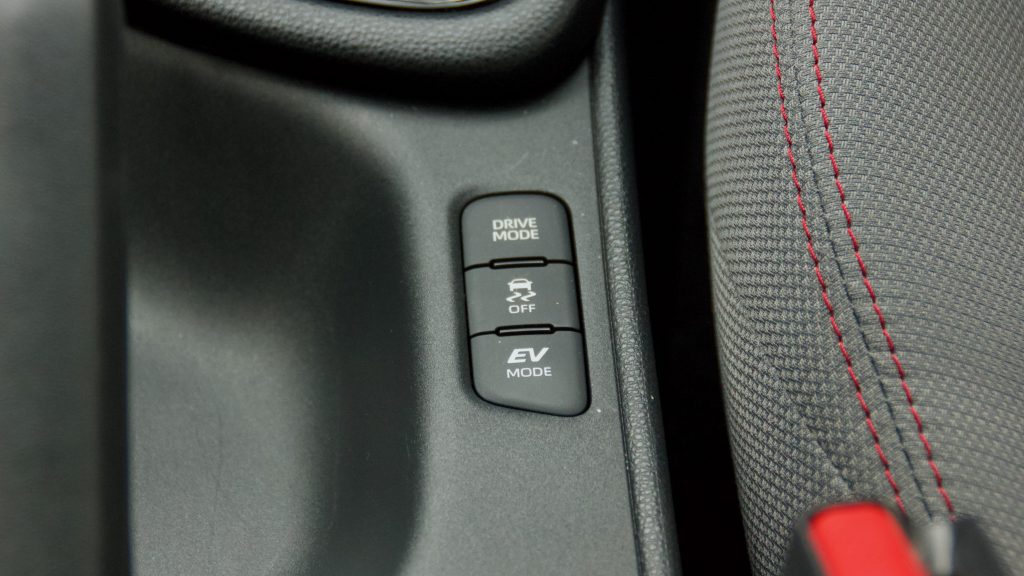
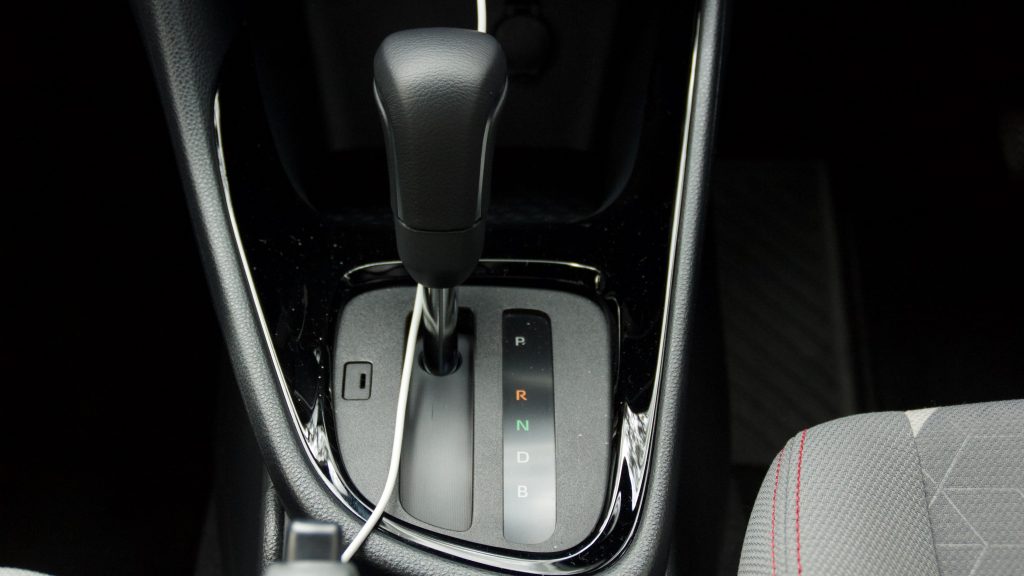
The 2021 Toyota Yaris ZR Hybrid has a huge 10-inch colour heads-up display that shows a plethora of info from your speed, the energy distribution for the drivetrain, cruise control, lane departure warning and even your entertainment info too. HUDs are great because you don’t have to take your eyes off the road for bits of information whilst driving, and it’s great to see more cars from this class with them.
Storage space is not amazing, however – there’s a tray ahead of the gear shifter, some small cupholders, shallow trays on the dashboard and reasonable door pockets, though no covered centre storage is disappointing, as is a lack of a centre arm rest at this price point. That’s especially considering that even entry level versions of the Yaris in the UK get a centre arm rest as standard, as well as a space-saving electric handbrake.
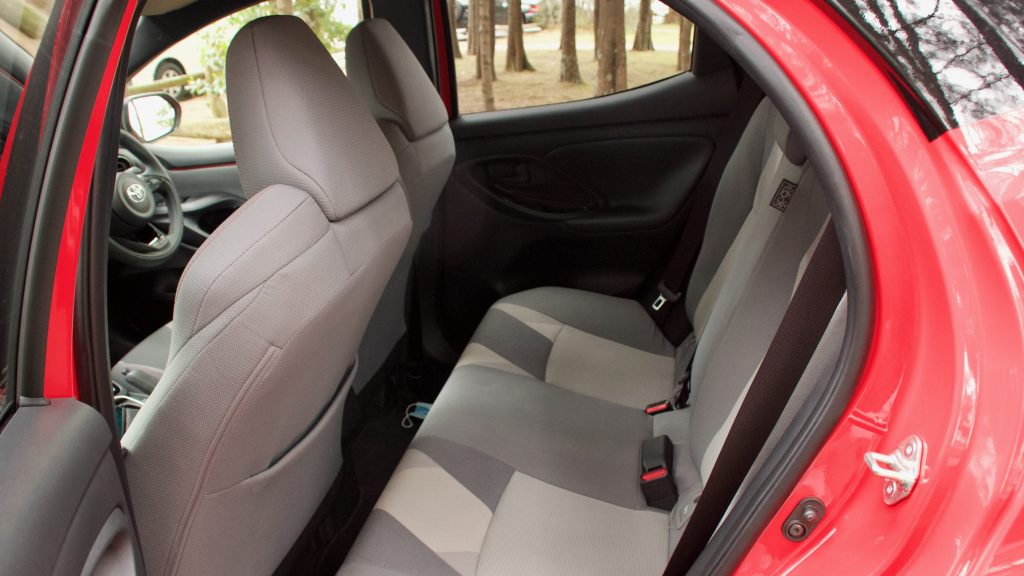
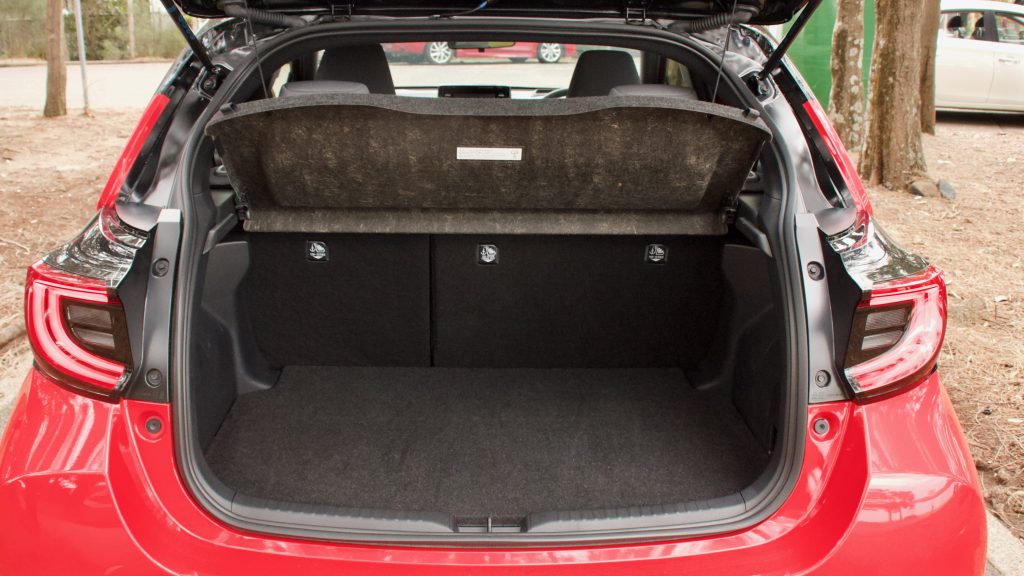
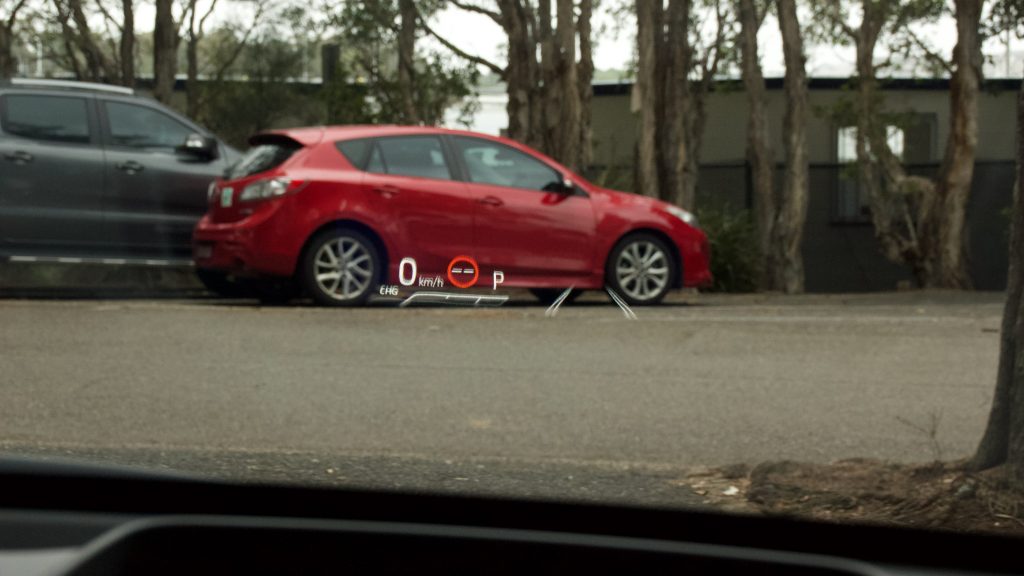
It’s also not the most spacious car in the world either, though the Yaris did get smaller for this generation. Rear seat space tight for six-footers such as myself, and it would be nice to see some – any! – rear seat features such as charging ports or cup holders. The boot is a reasonable 270-litres – more than the Mazda2’s 250L though smaller than the Polo’s 351L space – and can be opened further with an under-floor layer of storage and flat-folding rear seat that opens up around 950L.
Service & Warranty: 9.5/10
Like all other new Toyota products, the 2021 Toyota Yaris ZR Hybrid has a five-year/unlimited km warranty with five years of capped price servicing. The service costs are dirt cheap for this car – over five years, you’ll spend just $975 on servicing the car, and unlike Toyotas of the past, its service intervals stretch to once yearly/every 15,000km. The battery pack also has an eight-year warranty, though it needs an annual battery check to keep the warranty. Unfortunately no Toyota has any roadside assistance.
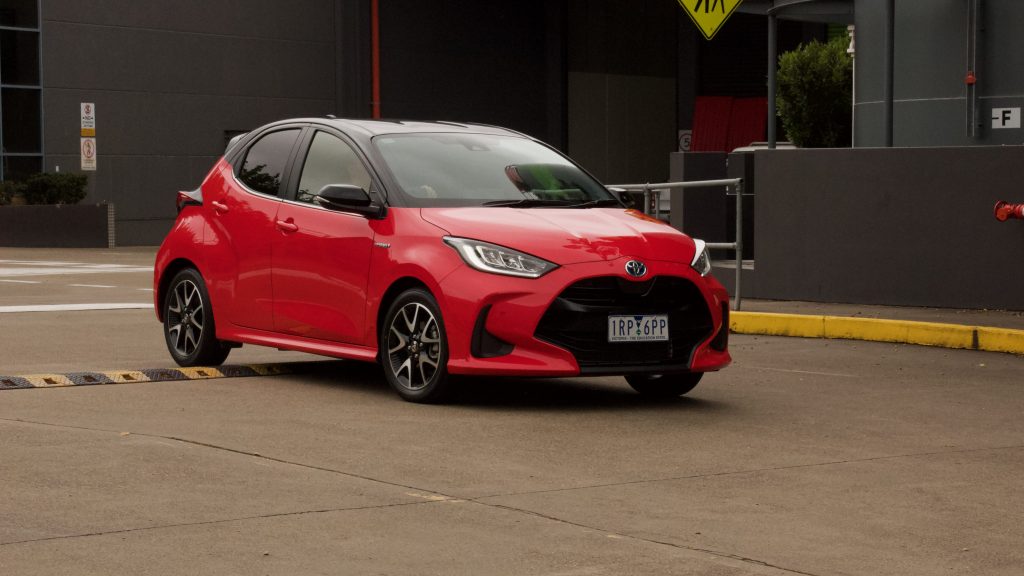
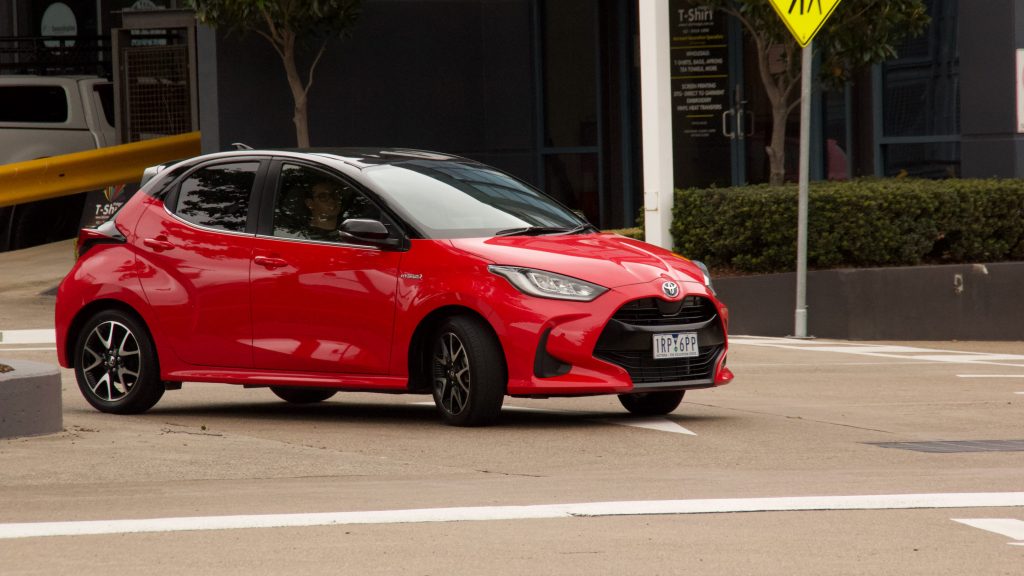
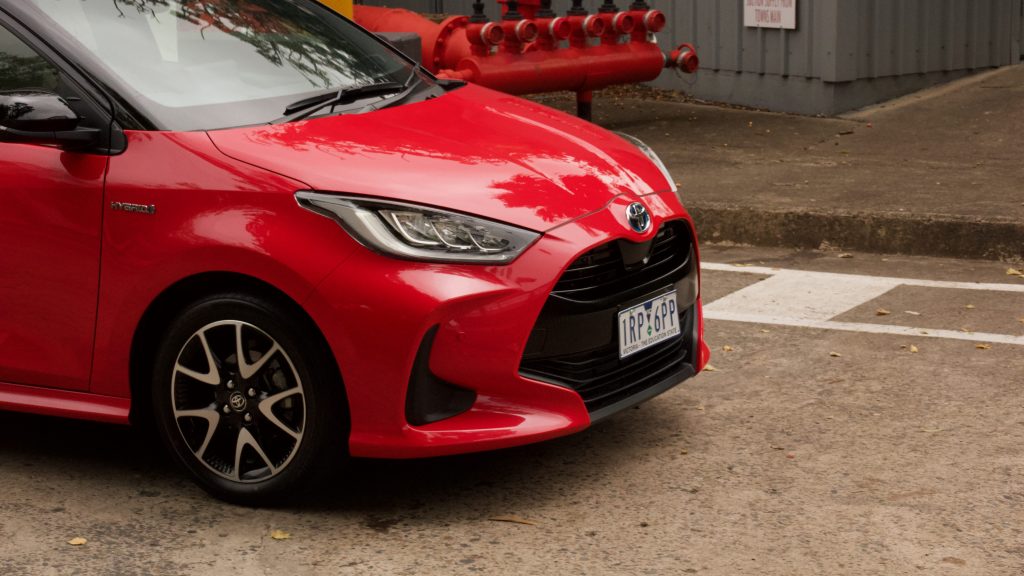
By comparison, the Mazda2 and Volkswagen Polo both have a five-year/unlimited km warranty as well, though the Mazda gives you roadside assistance for the full warranty term and the VW a year that’s topped up with each service if performed at a dealership. Servicing the Mazda costs $1,874 over five years – but that’s to only 50,000km, which is something to keep in mind if you do more than 10,000km per year – and the VW costs an eye-watering $2,500 over five years/75,000km.
The 2021 Toyota Yaris ZR Hybrid DiscoverAuto Rating: 7.9/10
The 2021 Toyota Yaris ZR Hybrid is a genuinely great car that, while expensive, offers a far higher quality, far more attractive, peppier yet more efficient and significantly safer overall experience than any Yaris that has gone before it. It’s relatively feature-packed, and unlike the previous generation model, offers genuine character.
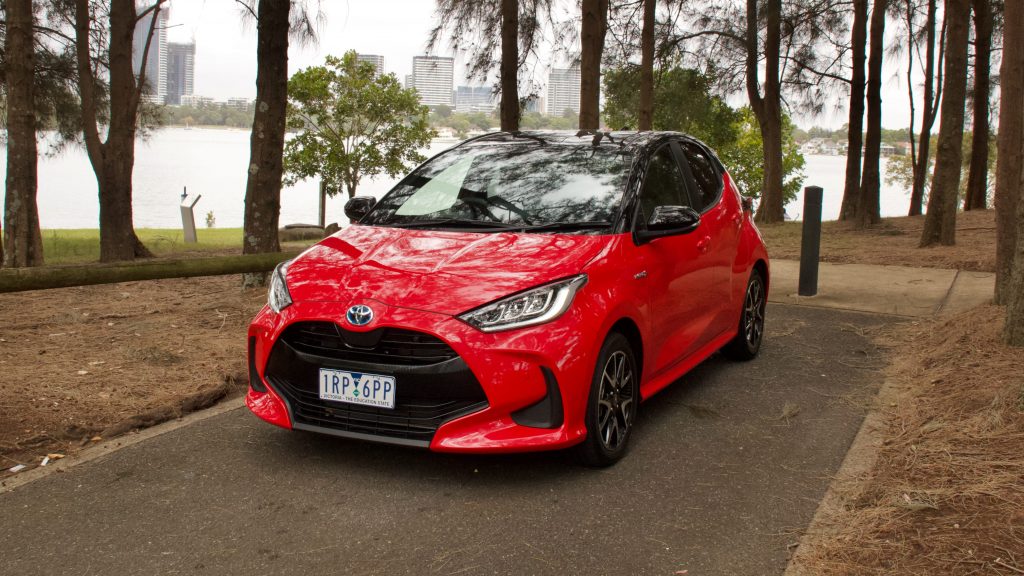
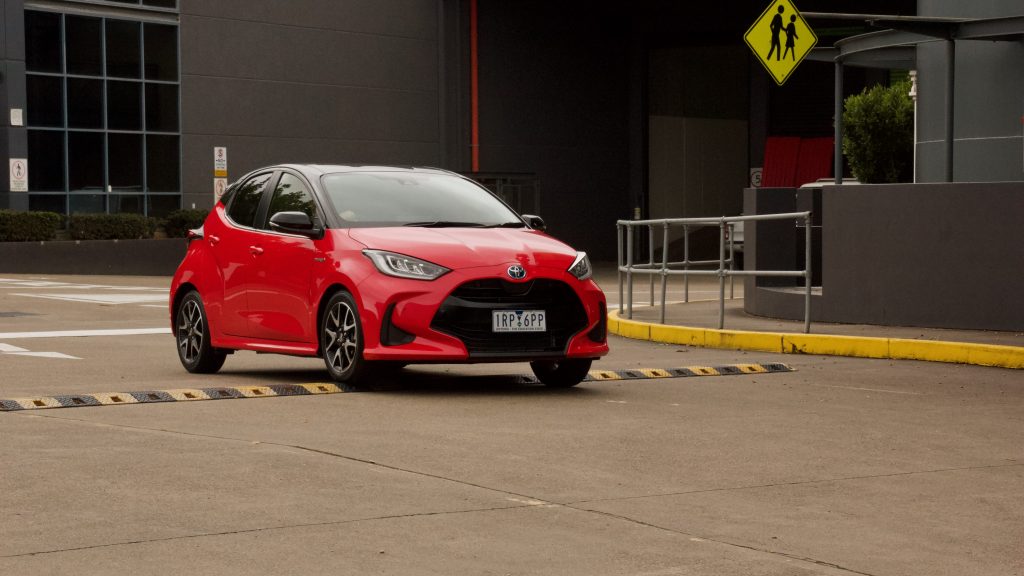
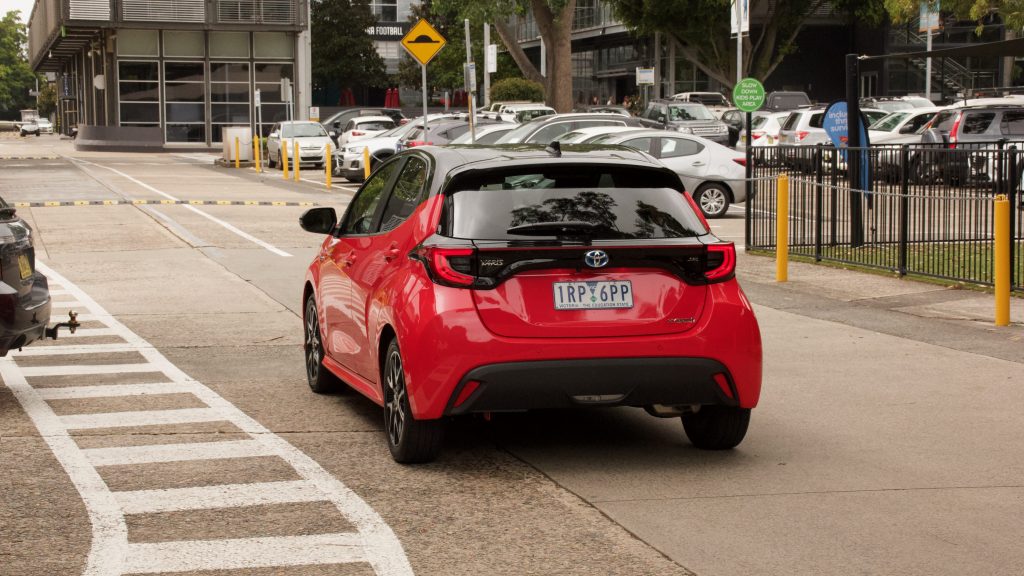
It’s also exceptionally cheap to run with arguably the cheapest capped price servicing on the new car market and fuel economy to help offset that high asking price. Of course, the price itself will put off a lot of buyers – who will likely migrate to the Yaris Cross anyway – but at its core, the new Yaris is a genuinely likeable product that deserves to sell well based purely based on its on merits alone. Whether it does or not, time will tell.
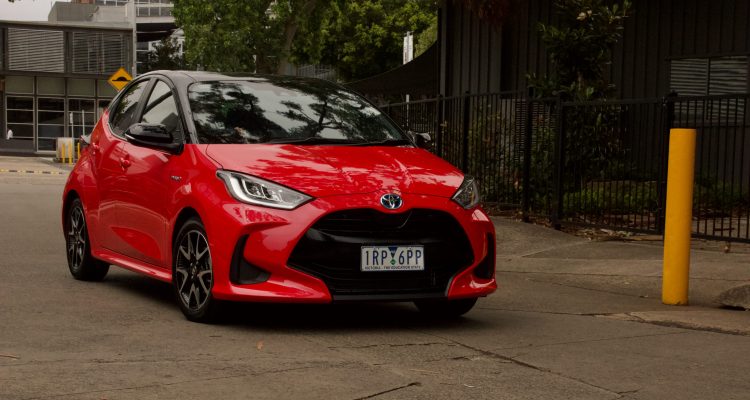
Leave a Reply